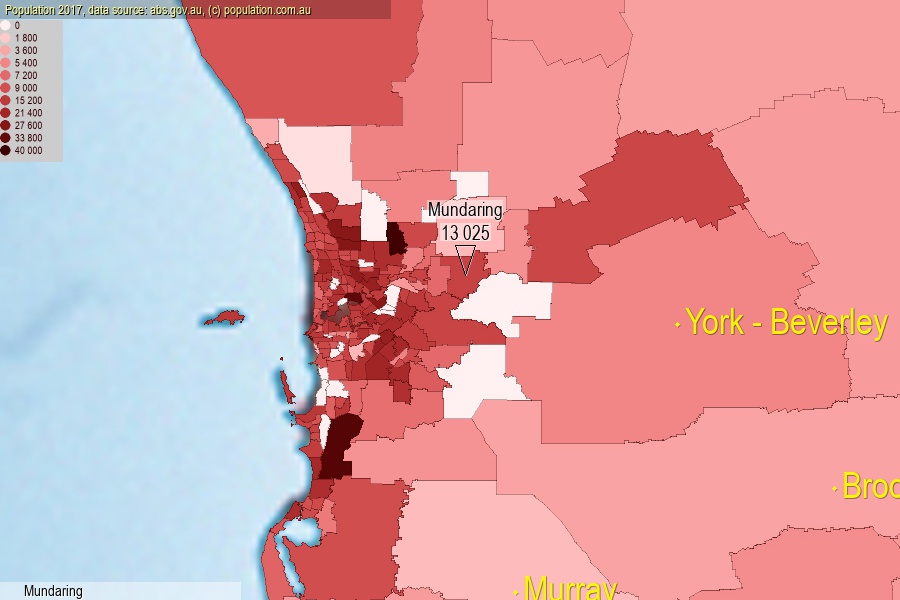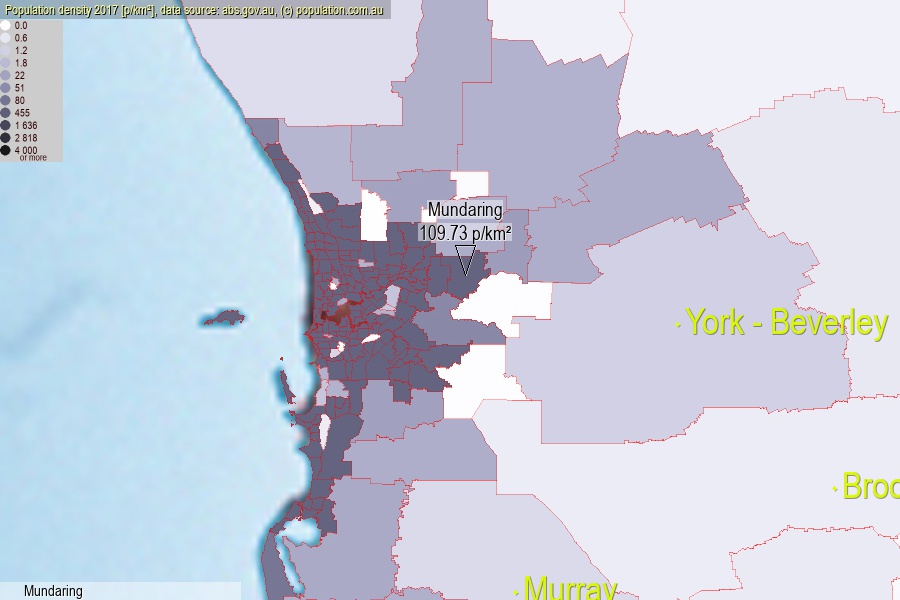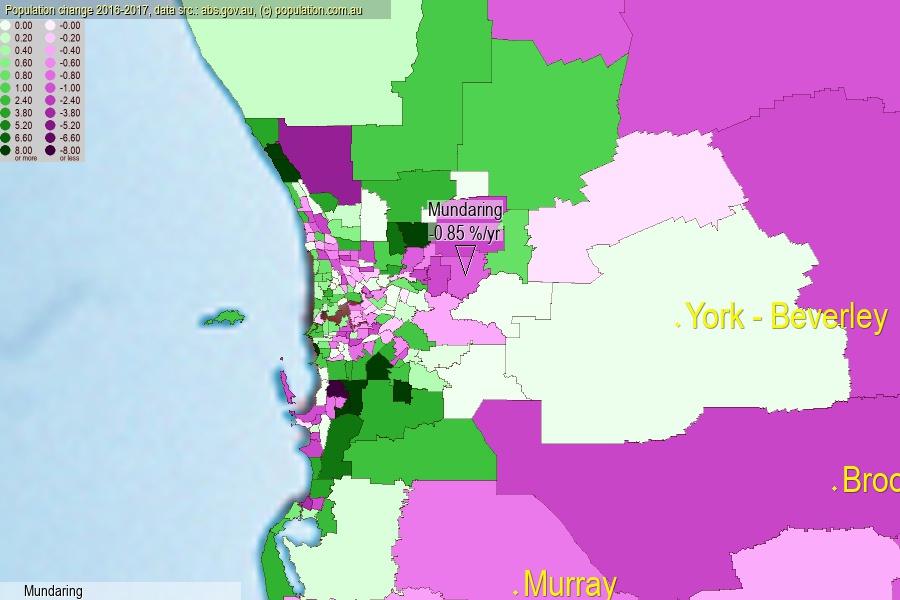 population.com.au
population.com.auLast official estimated population of Mundaring (as Statistical Area Level 2) was 13 025 people (on 2017-06-30)[2]. This was 0.05% of total Australian population and 0.503% of WA population. Area of Mundaring is 118.70 km², in this year population density was 109.73 p/km² . If population growth rate would be same as in period 2016-2017 (-0.85%/yr), Mundaring population in 2025 would be 12 170. [0]



Click to enlarge. Mundaring is located in the center of the images.
Population [people], population density [p./km²] and population change [%/year] [2]
View borders » (new window) [4]
[1991-1992] +2.35 %/Yr.
[1992-1993] +1.76 %/Yr.
[1993-1994] +1.68 %/Yr.
[1994-1995] +2.49 %/Yr.
[1995-1996] +2.70 %/Yr.
[1996-1997] +1.31 %/Yr.
[1997-1998] +0.77 %/Yr.
[1998-1999] +1.83 %/Yr.
[1999-2000] +0.75 %/Yr.
[2000-2001] +1.46 %/Yr.
[2001-2002] +1.82 %/Yr.
[2002-2003] +1.38 %/Yr.
[2003-2004] +0.68 %/Yr.
[2004-2005] +1.74 %/Yr.
[2005-2006] +1.16 %/Yr.
[2006-2007] +1.10 %/Yr.
[2007-2008] +1.22 %/Yr.
[2008-2009] +1.32 %/Yr.
[2009-2010] +0.44 %/Yr.
[2010-2011] +1.11 %/Yr.
[2011-2012] +1.63 %/Yr.
[2012-2013] +1.08 %/Yr.
[2013-2014] -1.14 %/Yr.
[2014-2015] -1.18 %/Yr.
[2015-2016] -1.36 %/Yr.
[2016-2017] -0.85 %/Yr.
[0] Calculated with linear interpolation from officially estimated population
[1] Read more about SA2 and Australian Statistical Geography Standard (ASGS) on abs.gov.au
[2] Population data from Australian Bureau of Statistics (Population and density: 2017; change: 2016-2017)
[3] Digital Boundaries: Australian Statistical Geography Standard (ASGS) 2016.
[4] Border coordinates are simplifyed using Ramer-Douglas-Peucker algorithm.